#Weather
Text




#gaming#video games#japan#nintendo#playstation#ps5#xbox#pc#pc gaming#funny#lol#humor#meme#relatable#switch#nintendo switch#spring#weather
2K notes
·
View notes
Text

87 notes
·
View notes
Text
#blue hair#taylorswift#him#emily didonato#animecore#trans man#yuri!!! on ice#jacksepticeye#andor#ts4cc#feelings#weather#chasity
123 notes
·
View notes
Photo

56 notes
·
View notes
Text
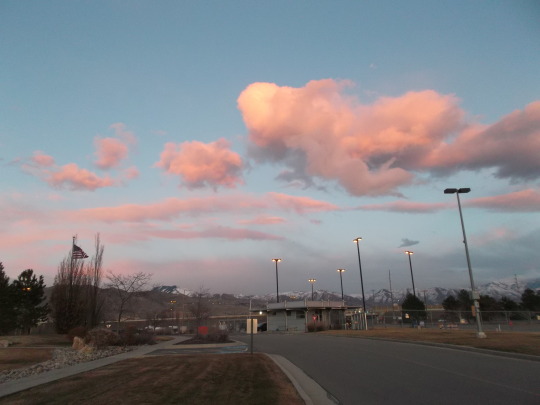
34 notes
·
View notes
Text

#photographers on tumblr#original photography#sea#seaside#seascape#beach#waves#water#coast#clouds#weather#nature#sky#baltic sea#scenery
34 notes
·
View notes
Text
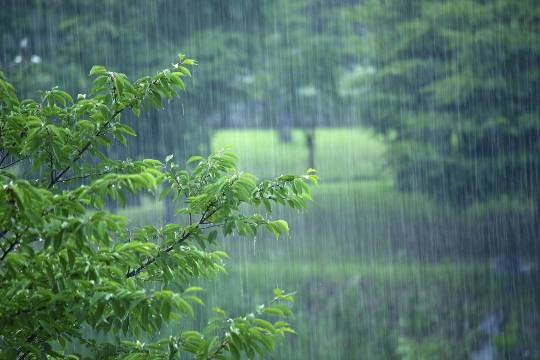



Sean bienvenidos japonistasarqueologicos a una nueva entrega del país del sol naciente en la que os explicaré que es el tsuyu, una vez dicho esto pónganse cómodos que empezamos.
-
¿Qué es el tsuyu? ¿En qué consiste? El tsuyu, en hiragana つゆ y en kanji corresponde a 梅雨. Esto corresponde a los meses de verano en Japón: Mayo a julio seguramente todos habréis visto la película de Tenki no ko, del director Makoto shinkai, en el que se puede apreciar muy bien este fenómeno por poner un ejemplo. En estos dos meses caen grandes trombas de agua a raudales que para algunos le resultará placentero y otros una tortura¿Qué es para vosotros?, ¿os gustan los periodos de lluvia?
-
Espero que os haya gustado y nos vemos en próximas publicaciones que pasen una linda semana.
-
日本の考古学者諸君、ようこそ、日出ずる国の新連載へ。ツユとは何かを説明しよう。
-
ツユとは何か?つゆとは、ひらがなでは「つゆ」、漢字では「梅雨」にあたる。皆さんは新海誠監督の映画『天 気の子』をご覧になったことがあるだろう。この2ヶ月間、滔々と降り注ぐ大雨は、ある人にとっては喜びであり、ある人にとっては拷問である。 あなたは雨の時期が好きですか?
-
それでは、また次の記事でお会いしましょう。
-
Welcome, Japanese archaeologists, to a new installment of the land of the rising sun in which I will explain to you what the tsuyu is, having said that, make yourselves comfortable and let's get started.
-
What is tsuyu and what does it consist of? Tsuyu, in hiragana つゆ and in kanji it would correspond to 梅雨. This corresponds to the summer months in Japan: May to July, you have probably all seen the film Tenki no ko, by director Makoto Shinkai, in which this phenomenon can be seen very well, to give an example. In these two months, huge downpours of water fall in torrents, which for some people will be a pleasure and for others a torture. What is it like for you, do you like periods of rain?
-
I hope you liked it and see you in the next posts have a nice week.
#日本#気候#気候学#雨#自然#天気#気象#夏雨#海産物#果物#-#japan#climate#climatology#tsuyu#nature#weather#meteorology#summerrain#rain#seafood#fruits#歴史#history#unesco#ユネスコ#geography
34 notes
·
View notes
Text

The day before the start of summer.
May 2015.
За день до начала лета.
Май 2015
#noseysilverfox#фотоблог#fotografía original#spring#весна#remember#природа#park#walking#old photo#sunny day#sunny#weather#pgotography#фотографлюбитель#прогулка#воспоминания#солнечныйдень#солнце#детство
16 notes
·
View notes
Text
Because I’m curious-
Reblog so this breaks containment and reaches people near the equator
18K notes
·
View notes
Text

10K notes
·
View notes
Text
"With “green corridors” that mimic the natural forest, the Colombian city is driving down temperatures — and could become five degrees cooler over the next few decades.
In the face of a rapidly heating planet, the City of Eternal Spring — nicknamed so thanks to its year-round temperate climate — has found a way to keep its cool.
Previously, Medellín had undergone years of rapid urban expansion, which led to a severe urban heat island effect — raising temperatures in the city to significantly higher than in the surrounding suburban and rural areas. Roads and other concrete infrastructure absorb and maintain the sun’s heat for much longer than green infrastructure.
“Medellín grew at the expense of green spaces and vegetation,” says Pilar Vargas, a forest engineer working for City Hall. “We built and built and built. There wasn’t a lot of thought about the impact on the climate. It became obvious that had to change.”
Efforts began in 2016 under Medellín’s then mayor, Federico Gutiérrez (who, after completing one term in 2019, was re-elected at the end of 2023). The city launched a new approach to its urban development — one that focused on people and plants.
The $16.3 million initiative led to the creation of 30 Green Corridors along the city’s roads and waterways, improving or producing more than 70 hectares of green space, which includes 20 kilometers of shaded routes with cycle lanes and pedestrian paths.
These plant and tree-filled spaces — which connect all sorts of green areas such as the curb strips, squares, parks, vertical gardens, sidewalks, and even some of the seven hills that surround the city — produce fresh, cooling air in the face of urban heat. The corridors are also designed to mimic a natural forest with levels of low, medium and high plants, including native and tropical plants, bamboo grasses and palm trees.
Heat-trapping infrastructure like metro stations and bridges has also been greened as part of the project and government buildings have been adorned with green roofs and vertical gardens to beat the heat. The first of those was installed at Medellín’s City Hall, where nearly 100,000 plants and 12 species span the 1,810 square meter surface.
“It’s like urban acupuncture,” says Paula Zapata, advisor for Medellín at C40 Cities, a global network of about 100 of the world’s leading mayors. “The city is making these small interventions that together act to make a big impact.”
At the launch of the project, 120,000 individual plants and 12,500 trees were added to roads and parks across the city. By 2021, the figure had reached 2.5 million plants and 880,000 trees. Each has been carefully chosen to maximize their impact.
“The technical team thought a lot about the species used. They selected endemic ones that have a functional use,” explains Zapata.
The 72 species of plants and trees selected provide food for wildlife, help biodiversity to spread and fight air pollution. A study, for example, identified Mangifera indica as the best among six plant species found in Medellín at absorbing PM2.5 pollution — particulate matter that can cause asthma, bronchitis and heart disease — and surviving in polluted areas due to its “biochemical and biological mechanisms.”
And the urban planting continues to this day.
The groundwork is carried out by 150 citizen-gardeners like Pineda, who come from disadvantaged and minority backgrounds, with the support of 15 specialized forest engineers. Pineda is now the leader of a team of seven other gardeners who attend to corridors all across the city, shifting depending on the current priorities...
“I’m completely in favor of the corridors,” says [Victoria Perez, another citizen-gardener], who grew up in a poor suburb in the city of 2.5 million people. “It really improves the quality of life here.”
Wilmar Jesus, a 48-year-old Afro-Colombian farmer on his first day of the job, is pleased about the project’s possibilities for his own future. “I want to learn more and become better,” he says. “This gives me the opportunity to advance myself.”
The project’s wider impacts are like a breath of fresh air. Medellín’s temperatures fell by 2°C in the first three years of the program, and officials expect a further decrease of 4 to 5C over the next few decades, even taking into account climate change. In turn, City Hall says this will minimize the need for energy-intensive air conditioning...
In addition, the project has had a significant impact on air pollution. Between 2016 and 2019, the level of PM2.5 fell significantly, and in turn the city’s morbidity rate from acute respiratory infections decreased from 159.8 to 95.3 per 1,000 people [Note: That means the city's rate of people getting sick with lung/throat/respiratory infections.]
There’s also been a 34.6 percent rise in cycling in the city, likely due to the new bike paths built for the project, and biodiversity studies show that wildlife is coming back — one sample of five Green Corridors identified 30 different species of butterfly.
Other cities are already taking note. Bogotá and Barranquilla have adopted similar plans, among other Colombian cities, and last year São Paulo, Brazil, the largest city in South America, began expanding its corridors after launching them in 2022.
“For sure, Green Corridors could work in many other places,” says Zapata."
-via Reasons to Be Cheerful, March 4, 2024
#colombia#brazil#urban#urban landscape#urban planning#cities#civil engineering#green architecture#green spaces#urban heat#urban heat island effect#weather#meteorology#global warming#climate change#climate hope#climate optimism#climate emergency#climate action#environment#environmental news#city architecture#bicycling#native plants#biodiversity#good news#hope#solarpunk#ecopunk#hopepunk
12K notes
·
View notes
Photo

38 notes
·
View notes
Text
Y’all in the American SW and west Mexico better check the national hurricane center and your weather for this weekend and next week.
Hurricane Hilary is about to make landfall and that whole desert area is supposed to get a years worth of rain or more. Death Valley is supposed to get twice the annual rainfall. Severe winds, massive flooding, and landslides are all strong possibilities.
This is gonna get ugly. Please spread the word. This is a majorly anomalous event and people may be unaware of the threat headed their way.
EDIT AUGUST 19th
Hilary will hit the Baja peninsula this evening at a category 2. It will arrive in southern California as a tropical storm on Sunday evening before weakening and moving into Nevada as a tropical depression.
THAT SAID: for the Americans here, even if the storm is “weak”, I want to emphasize that the main danger is rain. We are most concerned about flooding. If you are in an area at risk for flooding, take appropriate precautions as per your city or state officials’ or the noaa’s directions. Even if you end up only being mildly inconvenienced, it is better to be prepared. Go to a friend or relatives house if you live near a body of water or a very low-lying area. Make sure you have water bottles and nonperishable foods. Keep your pets indoors. Don’t wade or drive into puddles.
Anyways, here’s some maps from the NHC
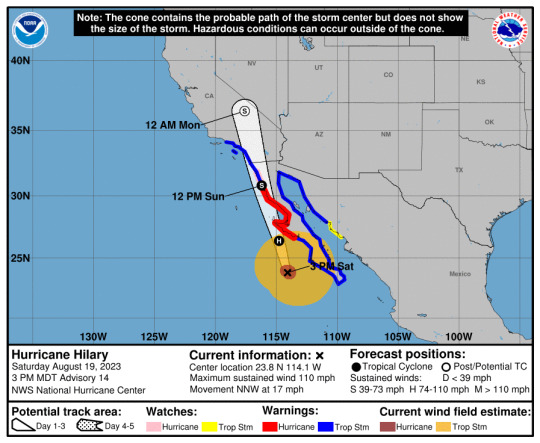

And here’s a link with information in Spanish.
AUGUST 20 FINAL UPDATE
Updated info from the NHC website.
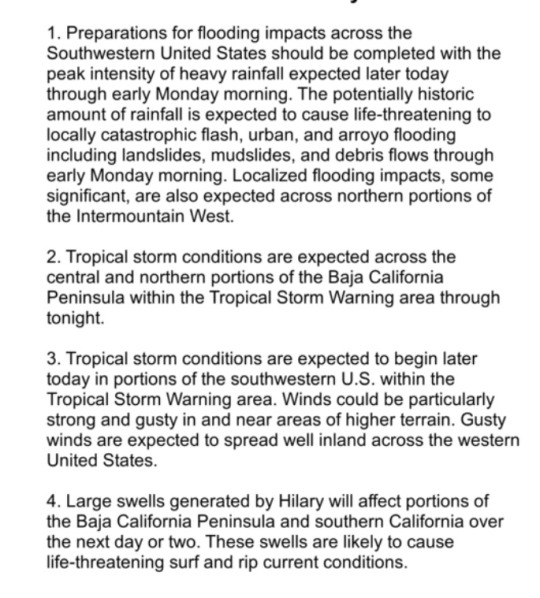

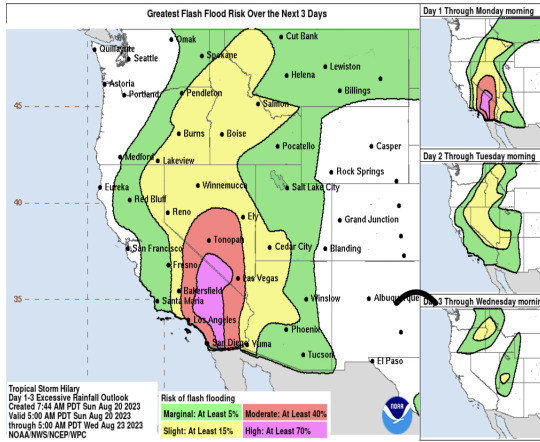
Newsom also issued a state of emergency for parts of Southern California. Widespread flooding is expected.
Good luck y’all
#hurricane#hurricane hilary#severe weather#severe storm#storms#weather#climate change#california#Mexico#Arizona#nevada#Utah
32K notes
·
View notes
Text
the first snow in harbin, northeastern china
#china#fun#video#douyin#weather#the ice city#cnetizens comment meanwhile the people of Guangdong are fighting against mosquitoes and flying cockroaches in the south#winter
14K notes
·
View notes

